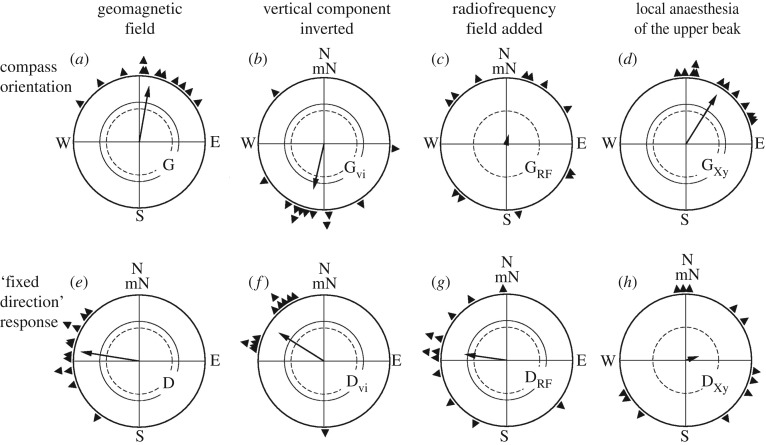Figure 1.
Magnetic compass orientation under green light (G) originating in radical pair processes (a–d), and a ‘fixed direction’ response in total darkness (D), probably originating in magnetite-based receptors in the beak region (e–h). The compass response is not sensitive to the polarity of the magnetic field, but to the axial course of the field lines; it is disrupted by radiofrequency fields, but not affected by anaesthesia up the upper beak. The ‘fixed direction’ response, in contrast, is a polar response; it is not affected by radiofrequency fields, but is disrupted by anaesthesia of the upper beak. The triangles at the periphery of the circle mark the mean directions of individual birds, the arrows indicate the grand mean vector and the inner circles give the 5% (dotted) and the 1% significance border of the Rayleigh test (see [2]).

